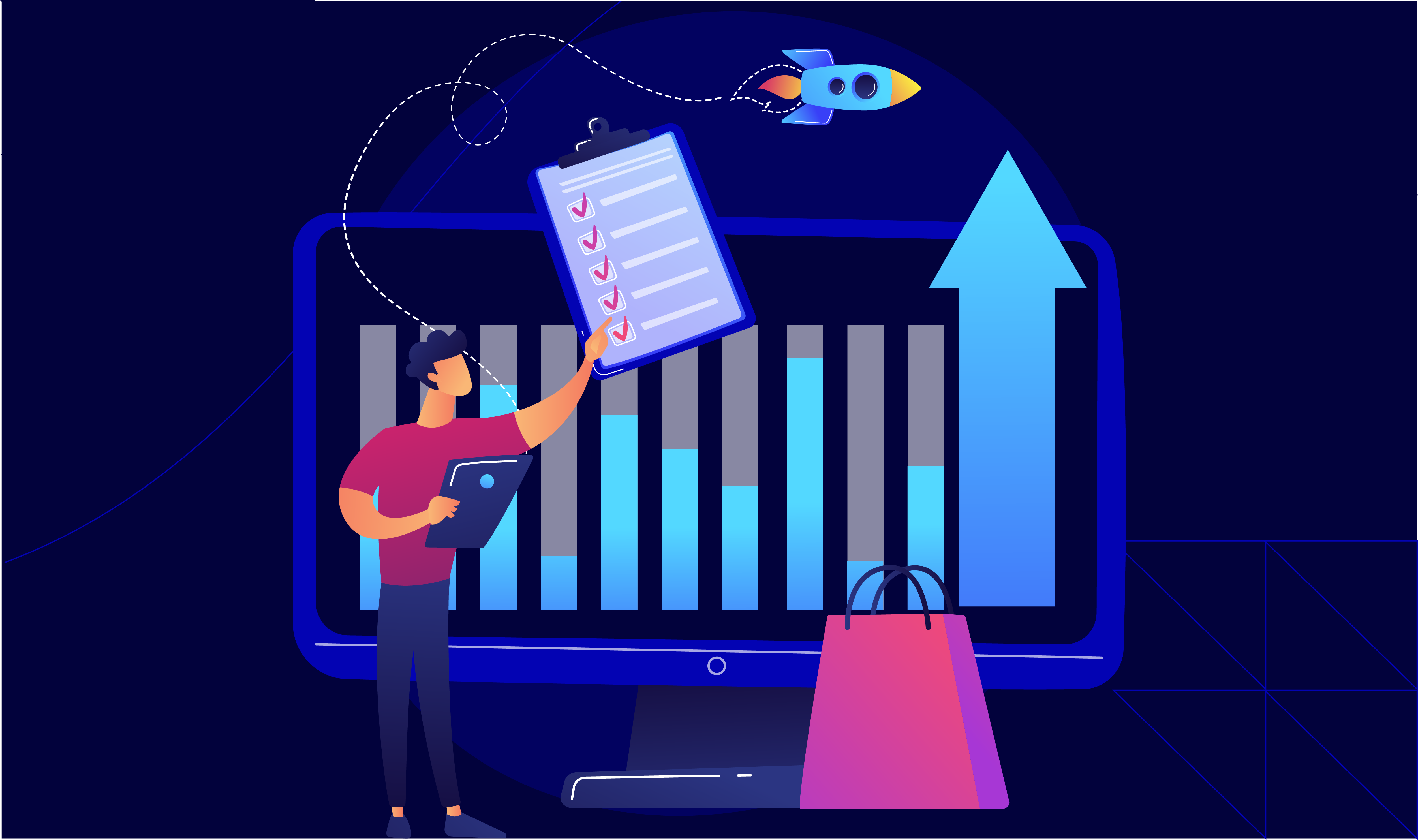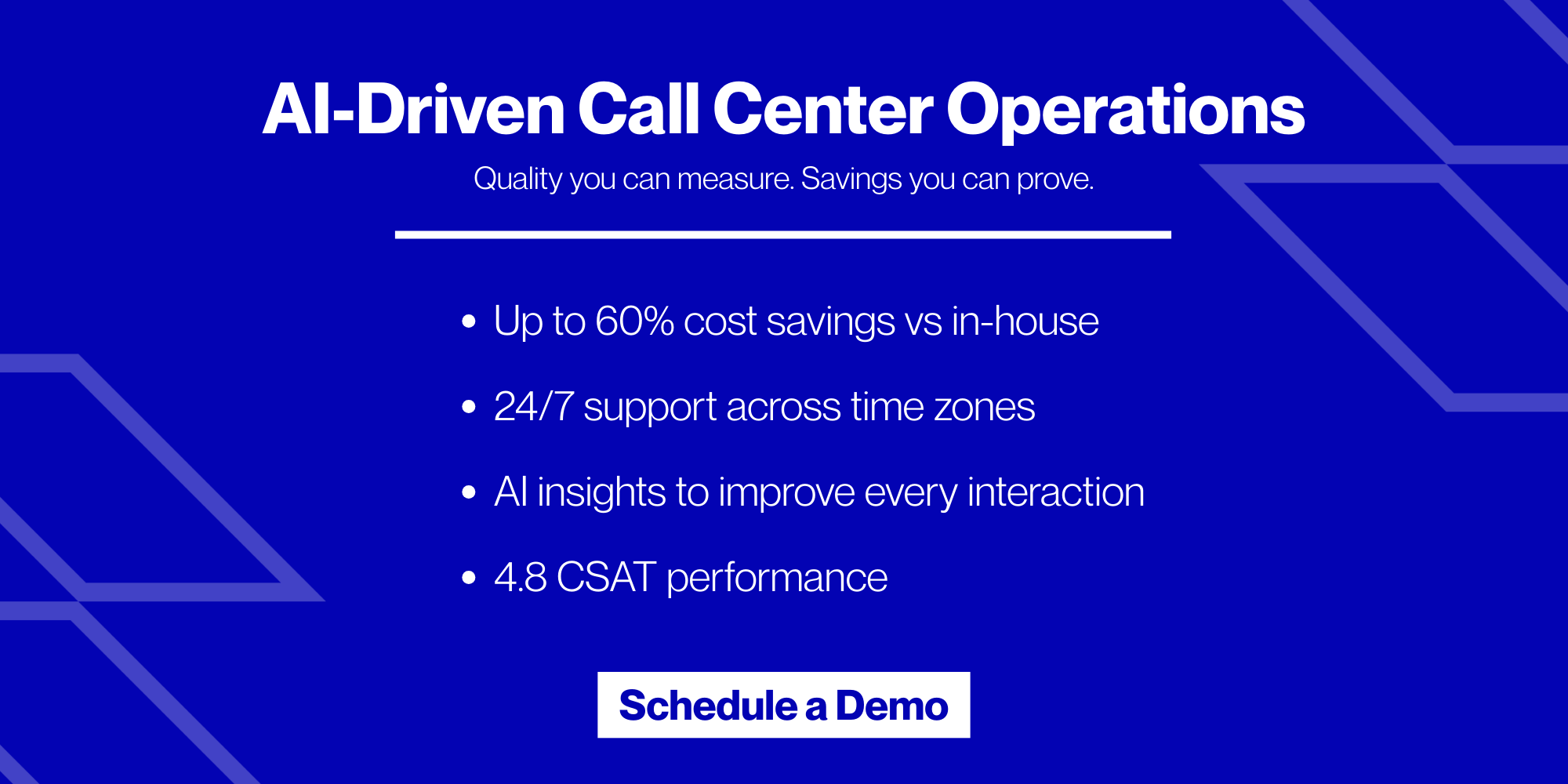When a brand or business starts, the focus is on launching quality products. But if the business needs to succeed and thrive in this competitive world, you need to focus on building a healthy relationship with your customers. With successful customer satisfaction, you can retain the customers, which can gradually increase the overall value of your business. For consumer brands and D2C companies in the US, UK & Australia, customer satisfaction is no longer a “nice-to-have”, it’s a growth booster.
By measuring customer satisfaction, you can understand the customer experience. So, how can you measure customer satisfaction? It can be done with the help of customer satisfaction KPIs (Key Performance Indicators). What is a KPI? KPI is the Key Performance Indicator. With the help of customer satisfaction performance indicators, you can have a clear idea of customers’ response to your brand.
What are Customer Satisfaction KPIs?

Customer Satisfaction KPIs are measurable indicators that help determine how happy customers are with a company’s products, services or interactions.
Why should you measure the customer satisfaction KPI? With the help of customer satisfaction performance indicators, the business can have a clear idea of the areas they need to focus on and improve, and what changes they should make to make the customer more satisfied and happier.
To achieve a higher customer satisfaction rate, you must have a proper understanding of the customer’s desires, pain points, and expectations. Only with these can you meet their needs. So, how can you gather this information? There are so many ways to measure happiness metrics. Some of the commonly used methods are customer surveys, customer feedback, and social media surveillance. The results of these surveys show how happy your customers are with your products and services. If the score is low, you need to improve your services. To do so, CX leaders at D2C companies with $5M+ revenue implement surveys at key touchpoints (checkout, support resolution, subscription renewal) to track these indicators in real time.
Why Is It Important To Measure Customer Satisfaction?

Customer satisfaction is never a tagline. It is an ultimate necessity. It is very important for the success of your business. That’s because there is a strong KPI and customer satisfaction correlation. Take a look at these benefits of measuring customer satisfaction with the help of customer satisfaction performance indicators. Research shows that companies excelling at customer experience grow revenues 4-8% faster than market averages.
Identifies areas of improvement
The first and foremost thing you need to focus on is identifying areas of improvement. Only by understanding this can you know why your customers are satisfied or dissatisfied. Through this, you can identify the areas that need high improvement.
For example, the customer may be happy with your service and may not be satisfied with the products you offer. In this case, you must improve the quality of the products you offer. The problems faced by the customers can be fixed only when you know about them. Several VPs, directors, and senior CX managers of D2C companies operating in the US and UK regions rely on KPIs to identify friction points.
Boosts customer retention
Developing a business is expensive. But do you know what is even more expensive? It is gaining new customers and retaining the existing ones. All you need to follow is a simple equation. The more satisfied your customers are, the less likely they are to go to your competitors.
Enhances Customer Loyalty
Customer satisfaction KPIs can help you enhance customer loyalty. Big brands like Amazon and Apple have more loyal customers only because they are satisfied with the services they provide. So, always make sure you provide experiences that can enhance the overall experience of the customers and boost their loyalty.
Increases revenue
Do you know that measuring customer satisfaction KPIs can boost your revenue? Yes, by measuring customer satisfaction and improving the services you offer, you can improve your business’s revenue. A fully satisfied and happy customer can enhance your business’s overall revenue.
Enhance products and services
The prime aim of measuring customer satisfaction is to elevate their overall experience. You can make the necessary changes by understanding how happy or satisfied the customer is with your brand. You can enhance the quality of the services and products you provide.
Monitoring performance
By measuring customer satisfaction regularly, you can track the performance and see how the changes you have made affect the satisfaction level. This allows businesses to make data-driven decisions and evaluate the effectiveness of their strategies.
Stand out in the crowd
In this competitive world, for a business to flourish, it should always stand out in the crowd. To stand ahead of the competition, you should always ensure that you are providing your customers with quality services. Measuring customer satisfaction can help customers improve their pain points.
Several consumer brands and D2C companies earning $5M+ revenue track these KPIs closely to protect customer loyalty and retention margins.
For CX-focused leaders, KPIs provide measurable proof of what’s working and what isn’t, in keeping customers satisfied.
Best KPIs to Track Customer Satisfaction: Everything you need to know

Now that we have understood how to measure customer satisfaction kpi it is time to dive deep into the actual topic – How to measure customer satisfaction KPI?
Here are the top 10 KPIs every consumer brand and D2C company should track in 2025:
1. Net Promoter Score(NPS)
NPS or Net Promoter Score is one of the most popular metrics that is used to measure customer satisfaction and loyalty. Brands worldwide consider NPS as the leading KPI for tracking customer satisfaction.
Why is NPS used? By measuring brand loyalty with NPS help brands can understand how well the customer is satisfied with the brand’s services and products. This will also help you track the customer experience after you have made the changes.
So, how can you measure the NPS score? It all depends on the answers to this one important question,
“How likely are you to recommend our company to a friend or colleague?”
The answer to this question can range from 1- 10. Based on the answers given, customers can fall under three categories.
- Promoters: They are the first set of customers who give you a rating of 9 or 10. They are happy with your brand’s services and products and are more likely to recommend it to their colleagues and friends through positive word-of-mouth referrals.
- Detractors: Detractors are the set of customers who rate you below 6. They are highly dissatisfied with your services and products. There is a high risk of switching to your competitors. There is also a higher chance of them spreading negativity about your products or services. They can negatively impact your brand’s reputation.
- Passives: These are a set of customers who rate you 7 or 8. They mostly fall between promoters and detractors. They neither promote your brand nor dislike your brand. But with little effort, you can turn them into promoters.
Do you know how to calculate the NPS score? You can make use of the NPS calculator. You can even follow the following formula.
| % of Promoters – % of Detractors = NPS |
You can compare your score with your competitors to improve your brand’s reputation and services.
Please note that Several CX leaders of D2C companies earning more than $5M revenue treat satisfaction metrics as boardroom priorities and not just support department reports!
2. Customer Satisfaction Score (CSAT)
Just like NPS, Customer Satisfaction Score KPIs, or CSAT, is also one of the top customer satisfaction performance indicators. It helps the business to directly measure customer satisfaction. We all know that no business can have 100% satisfied customers.
By understanding the customer satisfaction levels, you can maintain a healthy relationship with your customers. So, how can you measure the CSAT score? The customers are asked to answer the following question,
“How would you rate the overall satisfaction with our product and service?”
The answers can be rated from 1 to 5. If the customers mark 1, then they are unsatisfied, and if they mark 5, they are very happy and satisfied with your product and services.
Here is a simple formula you can use to measure the CSAT score.
| No of satisfies customers(4,5 responses)
__________________________________________________ X 100 = CSAT No of total responses |
3. Customer Effort Score(CES)
Customer Effort Score (CES) measures the effort put by the customer to interact with your brand’s products and services. Through this, you can track the customer touchpoints and improve the customer experience. Customer experience and satisfaction are very important for the success of any business. If the customers find it difficult to interact with your brand, they won’t do it. So always ensure that you are providing them with a seamless experience.
You can measure the CES by a simple question, “How easy was it to solve the problem today?”. Customers can rate it between 1 to 5. Here is a simple formula for calculating CES
| Sum of the responses
___________________________ = CES Total No of responses |
With the help of these scores, you can improve the overall customer experience and satisfaction.
4. Customer Health Score
Customer Health Score is the rating that helps to measure customer satisfaction with your brand’s services and products. This metric is used to measure whether the customer is healthy or at risk. It is the assessment to check the customer’s engagement and satisfaction. Through this, you can have a clear understanding of the customers at risk and can bring them back to focus.
Here are some of the pro tips you can use to measure the customer health score.
- Product Usage: How frequently are customers buying your products?
- Depth of Usage: How many products are being used by customers?
- Breadth of Usage: How many users within a license are using this product/service?
- The number of service interactions: How often the customers need to contact the service team.
5. Customer Service Satisfaction(CSS)
CSS helps to identify how satisfied the customers are with your products and services. Customers always rely on the brands that offer them quality services and products. Hence, for a brand to thrive in this competitive world, it is very important to know how well your brand provides quality services and products.
How to measure customer service satisfaction? Just like other surveys, you have to give a rating from 1 to 5.
- 1- Very Unsatisfied
- 2- Unsatisfied.
- 3- Neutral
- 4- Satisfied.
- 5- Very Satisfied.
Here is a simple formula you can use to measure the CSS
| Sum of all ratings/Total number of responses = CSS |
With these findings, you can measure the quality of your services and the performance of your employees.
6. Churn Rate and Retention Rate
- Customer retention rate is the percentage of customers who remain in your business and are satisfied with your services and products.
- Customer churn rate is just the opposite of the customer retention rate. It is the percentage of customers who stop doing business with your brand.
When it comes to business, churn is inevitable. The best thing is how well you handle them. There will always be a set of customers who leave your brand. But the real problem is that if the churn rate keeps increasing, it can adversely affect your business.
If you want to understand the churn rate and the retention rate, there is a simple formula you need to follow.
| (Customer at the end of the period –
new customers during the period ________________________________________________________ x 100 = customer retention rate (%) Total customers at the start of the period |
| (Customer at the beginning of the period –
Customers at the end of the period ________________________________________________________ x 100 = customer churn rate (%) Total customers at the start of the period |
7. First Response Time
First response time is a critical customer service metric that gives an accurate measure of the number of minutes, hours, or days it took the service agent to respond to the customer’s first request or query. But do you know how it affects customer satisfaction? Customers usually rely on the brand that offers them a quick response. Even a slight delay can leave them frustrated and unsatisfied.
To measure First Response Time, use the following equation.
| Sum of first response time/number of tickets = average first response time |
Each company may have different goals and priorities. Here are a few common benchmarks you need to follow.
- On average, a company takes 12 hours to respond to an email.
- If you are aiming to provide world-class service, you should respond to the email within 15 minutes to 1 hour.
- Respond to social media messages within an hour.
- In case of a phone call, the customer should be made to wait less than 3 minutes.
8. Average Resolution Time
Average Resolution Time is how long it takes for your team to respond and resolve the issue raised by the customer. It helps you understand how efficient you are in solving the issues or problems. So, how can you measure the Average Resolution Time? Follow this simple formula
| Total resolution time for problems solved / number of problems solved = average resolution time |
It is usually calculated in hours.
9. First Contact Resolution
First Contact Resolution is another important KPI customer satisfaction. It measures how well the customer support deals with or resolves the issues for the first time a customer makes contact. All the customers expect to resolve their issues very quickly.
Follow this simple formula to calculate First Contact Resolution
| Number of incidents resolved on the first contact / total number of incidents = first contact resolution rate |
10. Customer Reviews
One of the key customer satisfaction KPIs is the customer review. Without the customer review, you cannot understand how exactly the customer feels about your products and services. Customer reviews have become a powerful tool in building or breaking a brand or business.
Studies have shown that 88% of customers look for online reviews by other customers before they end up buying a product. Customers indeed go through a lot of reviews before they click the buy now button. More than anything, the customers trust the reviews by other customers.
With the help of the reviews, you can understand how customers feel about your products and services. This data will help you improve your services.
Final Thoughts,
Customer satisfaction Key performance indicators are strategic levers for retention, revenue and brand growth. With the growing technology, it is easier for businesses to gather information and collect data.
This blog has provided comprehensive insights into understanding customer satisfaction, its importance, and the best KPIs to track it. Customer satisfaction KPIs like NPS, CES, CSS, and CSAT help businesses identify areas of improvement and take necessary action.
Nowadays, modern CX heads of the US and UK-based firms use granular KPI data to segment customers and personalize improvement strategies. At Atidiv, we support CX teams with end-to-end KPI management from NPS survey design to advanced analytics dashboards.
Atidiv offers you end-to-end NPS services, right from survey design to analytical dashboards, and we help you gain actionable insights to drive long-lasting relationships.
FAQs On Customer Satisfaction KPI
1. What is the best KPI for measuring customer satisfaction?
Net Promoter Score or NPS is considered to be the best KPI for measuring customer satisfaction. It gives a proper insight into the customer’s feelings about the brand’s products and services.
2. What is the KPI customer effort score in 2025?
Customer Effort Score or CES is the customer satisfaction performance indicator that asks the customer to rate the ease of using the product or service.
3. What are the KPIs for customer satisfaction?
Some of the most commonly used KPIs for measuring customer satisfaction are CSAT, NPS, CES, FRT, CSS, and so on.

